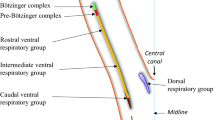Abstract
Various animal models, especially rodents, are used to study pain, due to the difficulty of studying it in humans. Many drugs that produce analgesia have been studied and there is evidence among which NSAIDs deserve to be highlighted. Dexketoprofen (DEX) provides a broad antinociceptive profile in different types of pain; therefore, this study was designed to evaluate the profile of antinociceptive potency in mice. Analgesic activity was evaluated using the acetic acid abdominal constriction test (writhing test), a chemical model of visceral pain. Dose-response curves for i.p. DEX administration (1, 3, 10, 30 and 100 mg/kg), using at least six mice in each of at least five doses, was obtained before and 30 min after pre-treatment with different pharmacological agents. Pretreatment of the mice with opioid receptor antagonists was not effective; however, the serotonin receptor antagonist and nitric oxide synthase inhibitor produce a significant increase in DEX-induced antinociception. The data from the present study shows that DEX produces antinociception in the chemical twisting test of mice, which is explained with difficulty by the simple inhibition of COX. This effect appears to be mediated by other mechanisms in which the contribution of the NO and 5-HT pathways has an important effect on DEX-induced antinociception.




Similar content being viewed by others
References
Argoff C 2011 Mechanisms of pain transmission and pharmacologic management. Curr. Med. Res. Opin. 27 2019–2031
Baptista-de-Souza D, Pelarin V, Canto-de Souza L, et al. 2018 Interplay between 5-HT2c and 5-HT1A receptors in the dorsal periaqueductal gray in the modulation of fear-induced antinociception in mice. Neuropharmacology 140 100–106
Corena-McLeod M 2015 Comparative pharmacology of risperidone and paliperidone. Drugs RD 15 163–174
Cortes-Altamirano JL, Olmos-Hernandez A, Jaime HB, et al. 2018 Review: 5-HT1, 5-HT2, 5-HT3 and 5-HT7 Receptors and their role in the modulation of pain response in the central nervous system. Curr. Neuropharmacol. 16 210–221
Cury Y, Picolo G, Gutierrez VP and Ferreira SH 2011 Pain and analgesia: The dual effect of nitric oxide in the nociceptive system. Nitric Oxide 25 243–254
Derry S, Cooper TE and Phillips T 2016 Single fixed-dose oral dexketoprofen plus tramadol for acute postoperative pain in adults. Cochrane Database Syst. Rev. 9 CD012232
Díaz-Reval MI, Ventura-Martínez R, Déciga-Campos M, et al. 2004 Evidence for a central mechanism of action of S-(+)-ketoprofen. Eur. J. Pharmacol. 483 241–248
Fornasari D, Allegri M, Gerboni S, et al. 2017 A “novel” association to treat pain: tramadol/dexketoprofen. The first drug of a “new pharmacological class”. Acta Biomed. 88 17–24
Gonzalez VC, Miranda HF, Sierralta F, et al. 2019 Pharmacological interaction between NSAIDs with clomipramine and risperidone in mice visceral pain. Drug Dev. Res. 1–4 https://doi.org/10.1002/ddr.21519
Grosser T, Theken KN and FitzGerald GA 2017 Cyclooxygenase inhibition: pain, inflammation, and the cardiovascular system. Clin. Pharmacol. Therap. 102 611–622
Hanna M and Moon JY 2019 A review of dexketoprofen trometamol in acute pain. Curr. Med. Res. Opin. 35 189–202
Hardikar MS 2008 Chiral non-steroidal anti-inflammatory drug - a review. Curr. Med. Res. Opin. 35 189–202
Luo ZD and Cizkova D 2000 The role of nitric oxide in nociception 2000 Curr. Rev. Pain 4 459–466
Miclescu A and Gordh T 2009 Nitric oxide and pain: ‘Something old, something new’. Acta Anaesthesiol. Scand. 53 1107–1120
Miranda HF, Puig MM, Prieto JC and Pinardi G 2006 Synergism between paracetamol and nonsteroidal anti-inflammatory drugs in acute experimental pain. Pain 121 22–28
Miranda HF, Puig MM, Romero MA and Prieto JC 2009 Effects of tramadol and dexketoprofen on analgesia and gastrointestinal transit in mice. Fund. Clin. Pharmacol. 23 81–88
Miranda HF, Romero MA and Puig MM 2012 Antinociceptive and anti-exudative synergism between dexketoprofen and tramadol in a model of inflammatory pain in mice. Fund. Clin. Pharmacol. 26 373–382
Miranda HF, Sierralta F, Aranda N, et al. 2016 Pharmacological profile of dexketoprofen in oofacial pain. Pharmacol. Rep. 68 1111–1114
Moore RA and Barden J 2008 Systematic review of dexketoprofen in acute and chronic pain. BMC Clin. Pharmacol. 8 11–28
Moore RA, McQuay HJ, Tomaszewski J, et al. 2016 Dexketoprofen/tramadol 25 mg/75 mg: randomised double-blind trial in moderate-to-severe acute pain after abdominal hysterectomy. BMC Anesthesiol. 22 9–19
Muley MM, Krustev E and McDougall JJ 2016 Preclinical assessment of inflammatory pain. CNS Neurosci. Therap. 22 88–101
Patrignani P and Patrono C 2015 Cyclooxygenase inhibitors: From pharmacology to clinical read-outs. Biochim. Biophys. Acta 1851 422–432
Tiippana E, Hamunen K, Kontinen V and Kalso E 2013 The effect of paracetamol and tropisetron on pain: experimental studies and a review of published data. Basic Clin. Pharmacol. Toxicol. 112 124–131
Walczak JS 2011 Analgesic properties of dexketoprofen trometamol. Pain Manage. 1 409–416
Yam MF, Loh YC, Tan CS, et al. 2018 General Pathways of Pain Sensation and the Major Neurotransmitters Involved in Pain Regulation. Int. J. Mol. Sci. 19 2164–2186
Zegpi C, Gonzalez C, Pinardi G and Miranda HF 2009 The effect of opioid antagonists on synergism between dexketoprofen and tramadol. Pharmacol. Res. 60: 291–295
Zippel H and Wagenitz A 2007 A multicentre, randomised, double-blind study comparing the efficacy and tolerability of intramuscular dexketoprofen versus diclofenac in the symptomatic treatment of acute low back pain. Clin. Drug Invest. 27 533–543
Author information
Authors and Affiliations
Corresponding author
Additional information
Communicated by BJ RAO.
Corresponding editor: BJ Rao
Rights and permissions
About this article
Cite this article
Noriega, V., Sierralta, F., Poblete, P. et al. Receptors involved in dexketoprofen analgesia in murine visceral pain. J Biosci 45, 94 (2020). https://doi.org/10.1007/s12038-020-00064-z
Received:
Accepted:
Published:
DOI: https://doi.org/10.1007/s12038-020-00064-z




